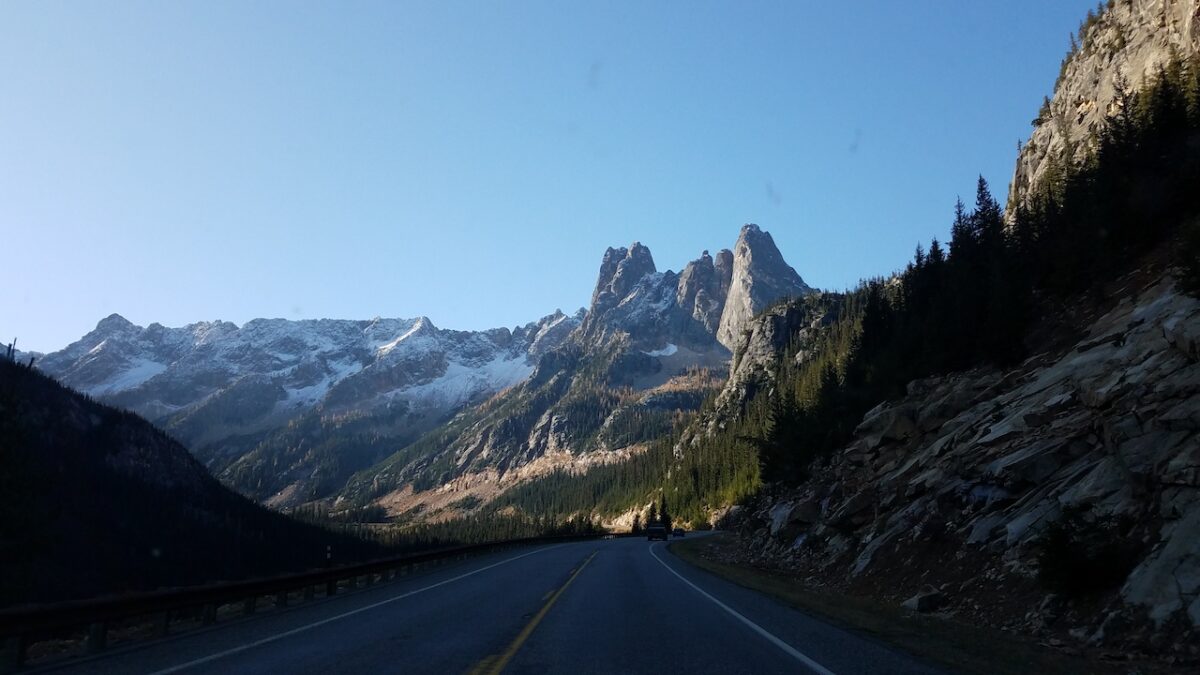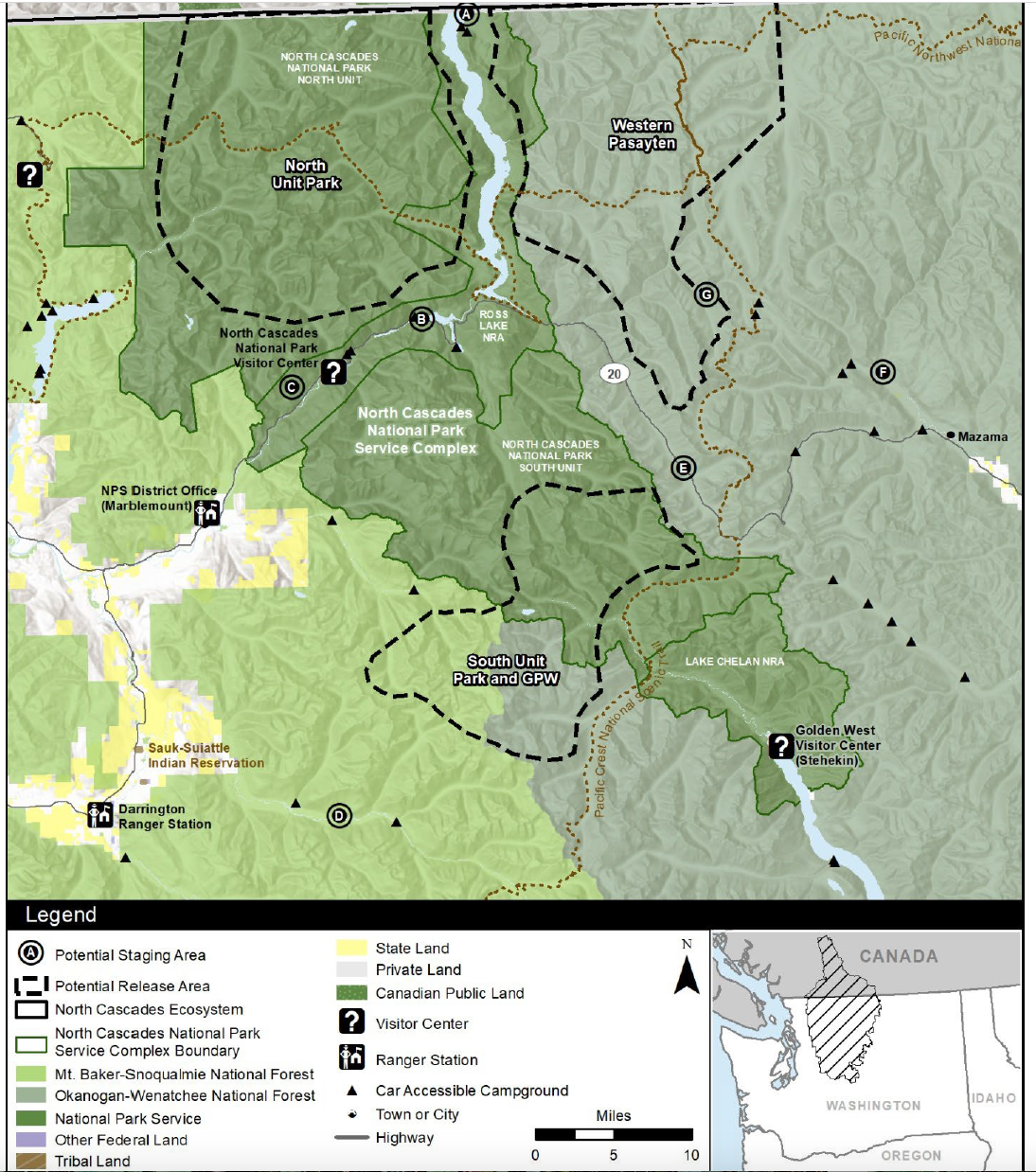
North Cascades Grizzly Bear Reintroduction Decision Finalized
Federal wildlife and land managers made final their decision to reintroduce grizzly bears to Washington’s North Cascades under section 10(j) of the Endangered Species Act today.

The designation as a nonessential experimental population at least means more management flexibility as the National Park Service and US Fish and Wildlife Service bring three to seven bears a year for five to 10 years into this land of rugged mountains and deep valleys, many of the latter of which are settled, between the Canadian border and Snoqualmie Pass, and foothills on either side of the Cascades.
Officials say there’s no set timeline for when reintroduction will begin, but grizzlies will be sourced from the northern Rockies of Montana, Yellowstone region or interior British Columbia and let loose in the north unit of North Cascades National Park, the western Pasayten Wilderness and south unit of the park and Glacier Peak Wilderness, with a goal of 25 bears on the ground. All animals would be GPS collared.
“Once an initial population of up to 25 grizzly bears is achieved, a transition to the adaptive management phase will occur. In this phase, additional grizzly bears could be released to address human-caused sources of mortality or removal, genetic limitations, or to improve population distribution and sex ratio. The selected alternative is anticipated to result in the achievement of a restoration population goal of 200 bears within approximately 60 to 100 years,” the official Record of Decision states.
Brad Thompson, USFWS state supervisor, said federal managers settled on the 10(j) designation rather than straight ESA based on “extensive community engagement and conversations about how the return of a grizzly bear population in the North Cascades will be actively managed to address concerns about human safety, property and livestock, and grizzly bear recovery,.”
“It provides an expanded set of management tools in recognition that grizzly bear recovery in the North Cascades is dependent on community tolerance of grizzly bears,” he said in a press release.
Washington’s North Cascades were once home to Ursus horriblis, but the species was extirpated over the last 150 years or so, with the last confirmed sighting in 1996. The feds say restoration “increases biodiversity and returns a keystone species to the environment,” and that the bears are “culturally significant to some Tribes and First Nations.”
“The Upper Skagit celebrates this decision for the great bear, the environment, and everyone who desires a return to a healthy Indigenous ecosystem,” Scott Schuyler, Upper Skagit Tribe policy representative, said in a press release. “We urge the agencies to move forward and put paws on the ground so the recovery may begin.”
The release of the final action is the culmination of a process that began during the Trump Administration and fizzled out late in 2020, but was rekindled under the Biden Administration in 2022. Numerous in-person and public meetings were held and some 12,000 comments were received on the feds’ preferred approach.
“Today’s announcement reinforces what we feared: no amount of local opposition was going to prevent these federal bureaucrats from doing what they wanted all along,” tweeted US Representative Dan Newhouse (R-Yakima), who has long opposed reintroduction of grizzly bears. His district includes Okanogan County.
Updates will be posted to the North Cascades National Park’s website.

